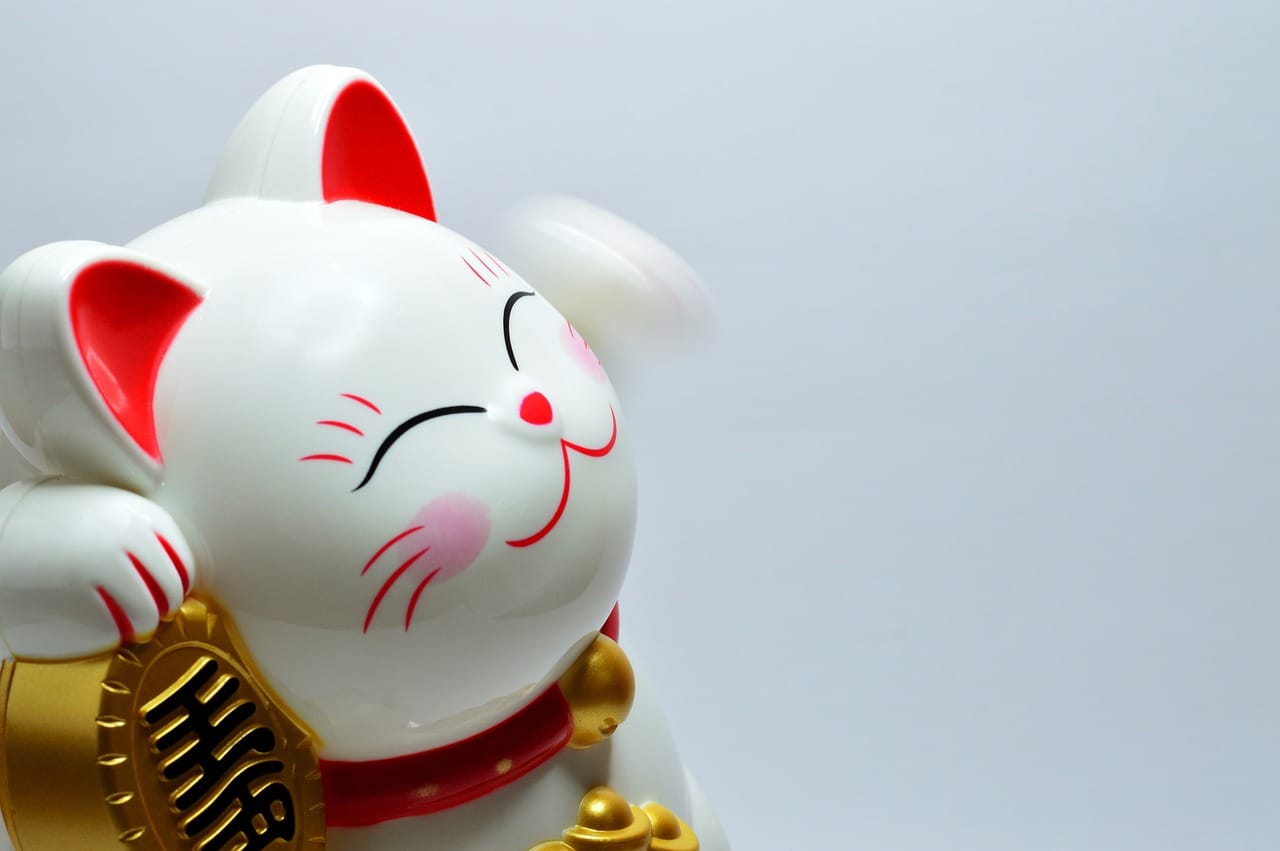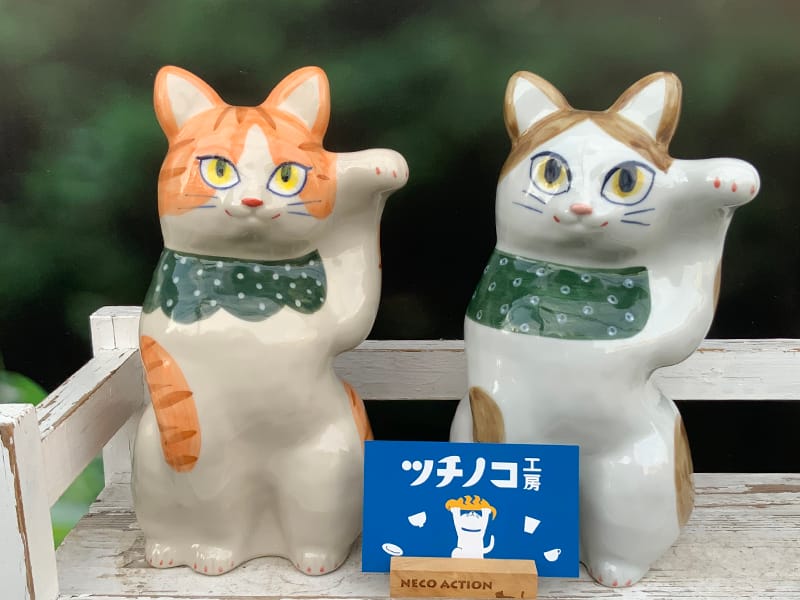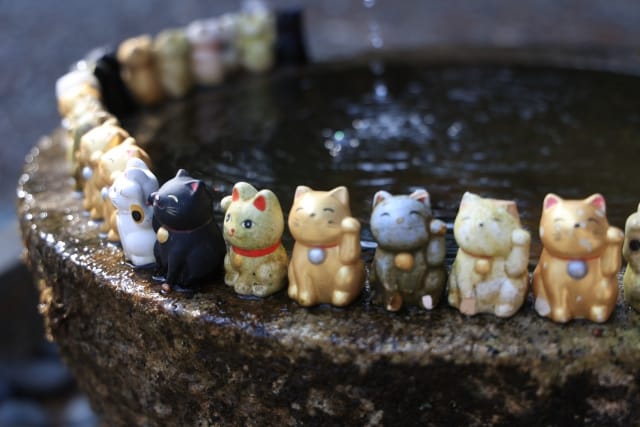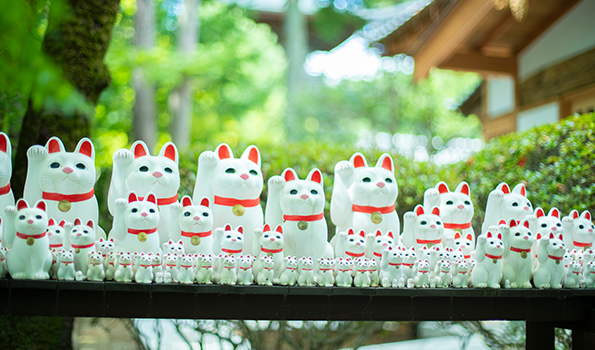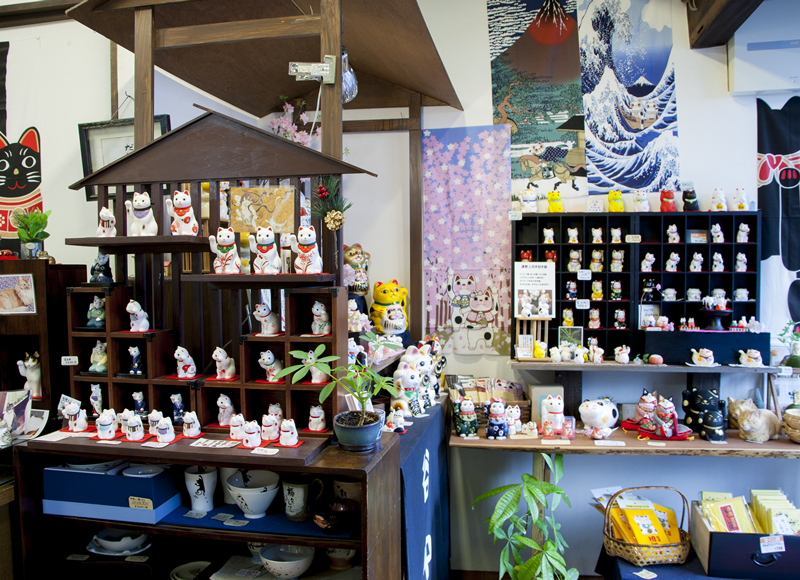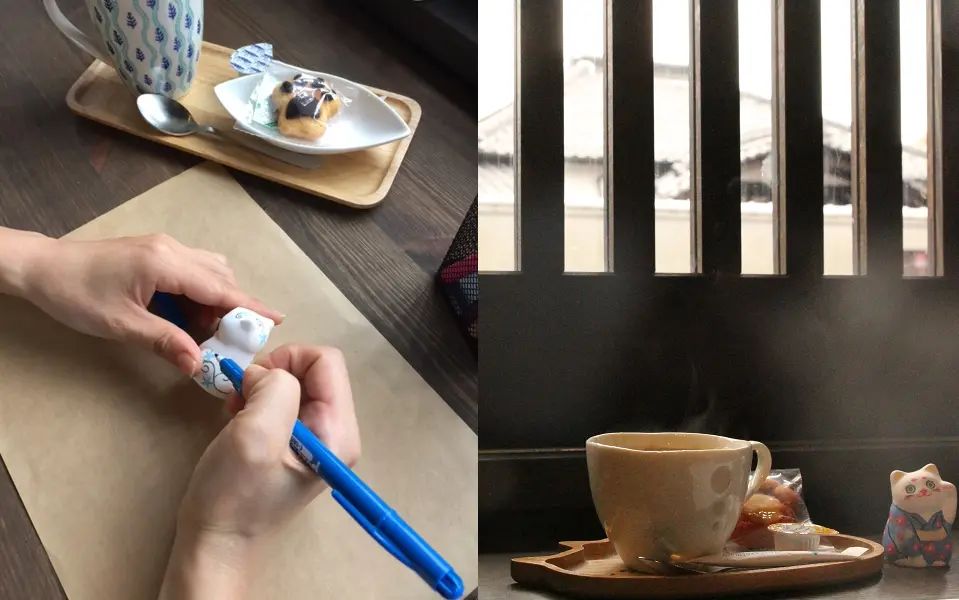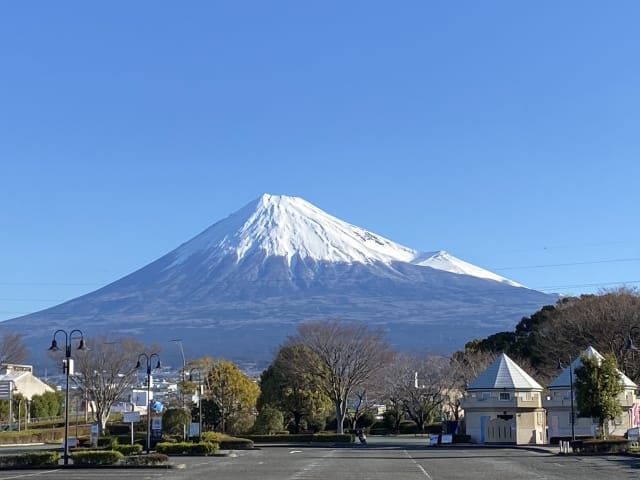What is the "Maneki Neko" in Japan?
I updated this article in January 2025 to incorporate my findings from this research, along with the latest information for 2025.
Another reason for updating the article is the growing interest in tours that allow visitors to enjoy sightseeing spots and Japanese traditional culture. As these tours gain popularity, Magical Trip's tour, which ranked #1 among all tours on Tripadvisor, has been receiving numerous applications.

If you want to experience the retro atmosphere and authentic Japanese charm of Yanaka Ginza, join the "Yanaka Historical Walking Tour in Tokyo's Old Town." A local guide will show you the most recommended spots in the Yanaka area, where historical sites are scattered throughout.
For those who love retro neighborhoods, we also recommend these two tours. Both can be enjoyed in the towns adjacent to Yanaka, and you can fully experience their charm simply by following guides who know these streets inside and out.
・Asakusa Cultural Walk & Matcha Making Tour
・All-You-Can-Drink Bar Hopping Tour in Ueno
We hope you'll have a wonderful time experiencing everything Ueno has to offer by joining a Magical Trip tour!
Introduction
This article introduces the origins, history, and recommended spots related to the Maneki Neko, a traditional Japanese cat figurine.
The Maneki Neko, named after its pose with a raised paw said to "beckon happiness" or "prosperity in business," has long been a popular good luck charm in Japan. You can find these distinctive figurines in shops, homes, shrines, hotels and more throughout Japan.
In recent years, Maneki Neko have been made not just in the traditional white color but in a variety of colors like yellow and pink. The figurine's benefits are said to vary depending on which paw is raised, so pay attention to the cat's pose too.
These charming cat figurines are widely recognized overseas as well, known as "welcoming cats" or "lucky cats." They make great souvenirs.
What exactly is a Maneki Neko?
The Maneki Neko is a traditional Japanese good luck charm that has long been placed inconspicuously at shop entrances and in homes. Originating over 100 years ago during the Edo era, they are still made today.
The exact origins of the Maneki Neko are unclear, but cats arrived in Japan from China around 1200-1300 years ago. Cats were very important for keeping mice away and were said to bring good fortune or enshrined as messengers of the gods.
A Chinese text from the 9th century describing that "when a cat washes its face, if its paw goes above its ear then a guest will come" is said to be one origin for finding meaning in the cat's raised paw pose. It represents the wish for "lots of customers to come" and prosperity in business.
Many people in Japan are fond of cats today, and cat-themed items are widely popular, not just among cat owners. The Maneki Neko is one example that combines a cute figurine with a lucky item.
The Maneki Neko's paw
Right paw raised
Maneki Neko come with either the right paw, left paw, or in some cases both paws raised. Each has a different meaning, which will be explained in detail from here.
Those with the right paw raised are male cats and said to "beckon happiness" and "beckon monetary fortune." The reason the right paw represents monetary fortune is not entirely clear. One theory is that the right paw holds a mallet of luck that grants any wish when shaken. What's certain is that they incorporate various Japanese auspicious stories and motifs.
Left paw raised
Maneki Neko with the left paw raised are female cats and said to beckon people. This pose is especially popular with customer-focused businesses hoping to attract lots of customers. They are often displayed at the front of shops with the wish that a steady stream of customers will come without end.
In terms of beckoning good fortune in personal relationships, this is also a pose chosen by those wishing for a good match. It can be a reassuring and cute ally, especially for those hoping to find a partner or spouse.
Both paws raised
There are also Maneki Neko with both paws raised. This pose is recommended for those who want to fulfill both the "monetary fortune" and "luck" of the right paw and the "good fortune in relationships" of the left paw.
However, some interpret the pose with both paws up as "surrender" or "hands up." Those who find this concerning could try placing a right-pawed and left-pawed Maneki Neko side-by-side instead.
Also, the height of the raised paw is said to have meaning too. If raised above the ears, it beckons fortune from afar; below the ears beckons nearby fortune. Pay attention to the paw height as well.
Maneki Neko colors
White cats
Maneki Neko have traditionally been based in white with colorful accents. Until recently, calico or white cats were most common, but nowadays Maneki Neko are made in various colors. The colors have meanings too, so use this as a reference.
White is the most popular color with all-purpose benefits for "opening fortune and beckoning luck." It is said to open fortune and beckon luck for any matter you have in your heart, whether work, promotions, or prosperity in business. If you're unsure, this color is recommended.
Black cats
Black Maneki Neko are said to be effective for "warding off evil," "warding off magic," and "household safety." While not as common as white, black has traditionally been one of the colors used for a long time.
In Japan, black cats have been thought to possess strong spiritual power, such as being able to see at night. Some may have the impression that black cats are scary, but black Maneki Neko are reliable figures that protect against bad things. There are even temples in Japan that enshrine black cats as messengers of the gods.
Calico cats
Calico Maneki Neko also have a white base, but differ from white Maneki Neko in that they have black and brown (red) fur colors.
That said, calicos have the same "opening fortune and beckoning luck" benefits as white ones. Calico Maneki Neko are said to be male cats, symbolizing a rare cat seldom seen. Due to this rarity, calico cats themselves are sometimes said to "bring luck" in Japan.
Like white ones, calico Maneki Neko can be expected to have effects on all sorts of matters like happiness, luck, and prosperity in business.
Colorful cats
Recently, colorful Maneki Neko have started being made too under the influence of feng shui. Feng shui is the ancient Chinese belief that the way a house is built and items are arranged affects success, health and happiness.
Feng shui places importance on the direction and color of items, so colorful Maneki Neko have become popular as well with the idea that they may double the effects.
Gold is said to be for monetary fortune, pink for success in love, blue for improving academics, green for household safety, and purple for health and longevity. If a certain color catches your eye, keep it in mind.
Gotokuji Temple: Birthplace of the Maneki Neko
Source: Official website
Gotokuji Temple in Tokyo is said to be the birthplace of the Maneki Neko.
The legend connecting the Maneki Neko and Gotokuji Temple originated over 300 years ago. Despite the temple being poor at the time, the head monk carefully raised a cat. One day, that cat beckoned to a distinguished samurai in front of the gate, leading to a connection that caused the temple to prosper through the samurai's backing.
Based on this story, Gotokuji Temple started offering cat-shaped dolls as good luck charms in the spirit of the cat that brought about a fortuitous relationship. The temple still cherishes cats today, and you can see lots of cat-themed ema (wooden wishing plaques) and Maneki Neko around the grounds.
Access
There are two ways to reach Gotokuji Temple by train. Take the Tokyu Setagaya Line to Miyanosaka Station and it's a 5-minute walk.
If using the Odakyu Odawara Line, get off at Gotokuji Station. It's about a 10-minute walk to the temple.
The path to the temple is lined with shops decorated with cat-themed signs and figurines, making the walk there enjoyable too.
<Gotokuji Temple>
- Hours: 6:00-18:00 (late March -), 6:00-17:00 (late September -)
- Access: 5-min walk from Miyanosaka Station on the Tokyu Setagaya Line, 10-min walk from Gotokuji Station on the Odakyu Odawara Line
- Official Website: https://gotokuji.jp/manekineko/
Visit Yanakado to buy a Maneki Neko
Source: Official website
Yanakado in Yanaka, Tokyo is recommended for those wanting to purchase a Maneki Neko. It's a specialty shop for handmade, hand-painted Maneki Neko. The shop is filled to the brim with lucky cat figurines along with cat-themed items like handkerchiefs and cards.
In addition to cute Maneki Neko, there are realistic cats, cool cats, and Maneki Neko in various colors and shapes from small to large sizes. There are also Maneki Neko with straps to use as key chains, perfect for souvenirs.
Access
Yanakado is located a 6-minute walk from Sendagi Station on the Tokyo Metro Chiyoda Line (Exit 1). It's almost a straight shot, so you shouldn't get lost.
<Store Information>
- Address: 5-4-3 Yanaka, Taito-ku, Tokyo
- Closed: Mondays (or Tuesday if Monday is a holiday)
- Phone: 03-3822-2297
- Hours: 10:30-17:30
- Website: https://yanakado.com/m_yanakado.html
- Access: 6-min walk from Sendagi Station (Exit 1) on the Tokyo Metro Chiyoda Line
Make a Maneki Neko at Cafe Nekoemon
Source: Official website
Yanaka also has a cafe where you can make your own Maneki Neko. Cafe Nekoemon is located in a renovated traditional Japanese house over 90 years old.
At the cafe, you can enjoy painting a Maneki Neko while having a drink. Use various colored pens to paint a palm-sized white cat figurine.
When you want to take a break, you can enjoy sweets like cat-themed cakes and eclairs along with drinks. Be sure to try making your very own original Maneki Neko.
Access
Cafe Nekoemon is located a 6-minute walk from Sendagi Station on the Tokyo Metro Chiyoda Line (Exit 1). It's almost a straight shot, so you shouldn't get lost. Cafe Nekoemon is a sister shop of the Maneki Neko specialty store Yanakado, so it's very close by.
<Shop Info>
- Address: 5-4-2 Yanaka, Taito-ku, Tokyo
- Closed: Mondays (or Tuesday if Monday is a holiday)
- Phone: 03-3821-0090
- Hours: 11:00-18:00
- Shop URL: https://yanakado.com/c_nekoemon.html
- Access: 6-min walk from Sendagi Station (Exit 1) on the Tokyo Metro Chiyoda Line
The traditional Japanese cat figurine known as the "Maneki Neko" has long been cherished in shops and homes for beckoning happiness. Recently it has become popularly known abroad as "lucky cats" or "welcome cats."
As introduced in this article, each pose and color of the Maneki Neko has its own meaning. Visiting temples and specialty shops associated with Maneki Neko or painting your own can make you grow even fonder of them.
Maneki Neko are popular souvenirs, so if any catch your eye, be sure to pick one up.
